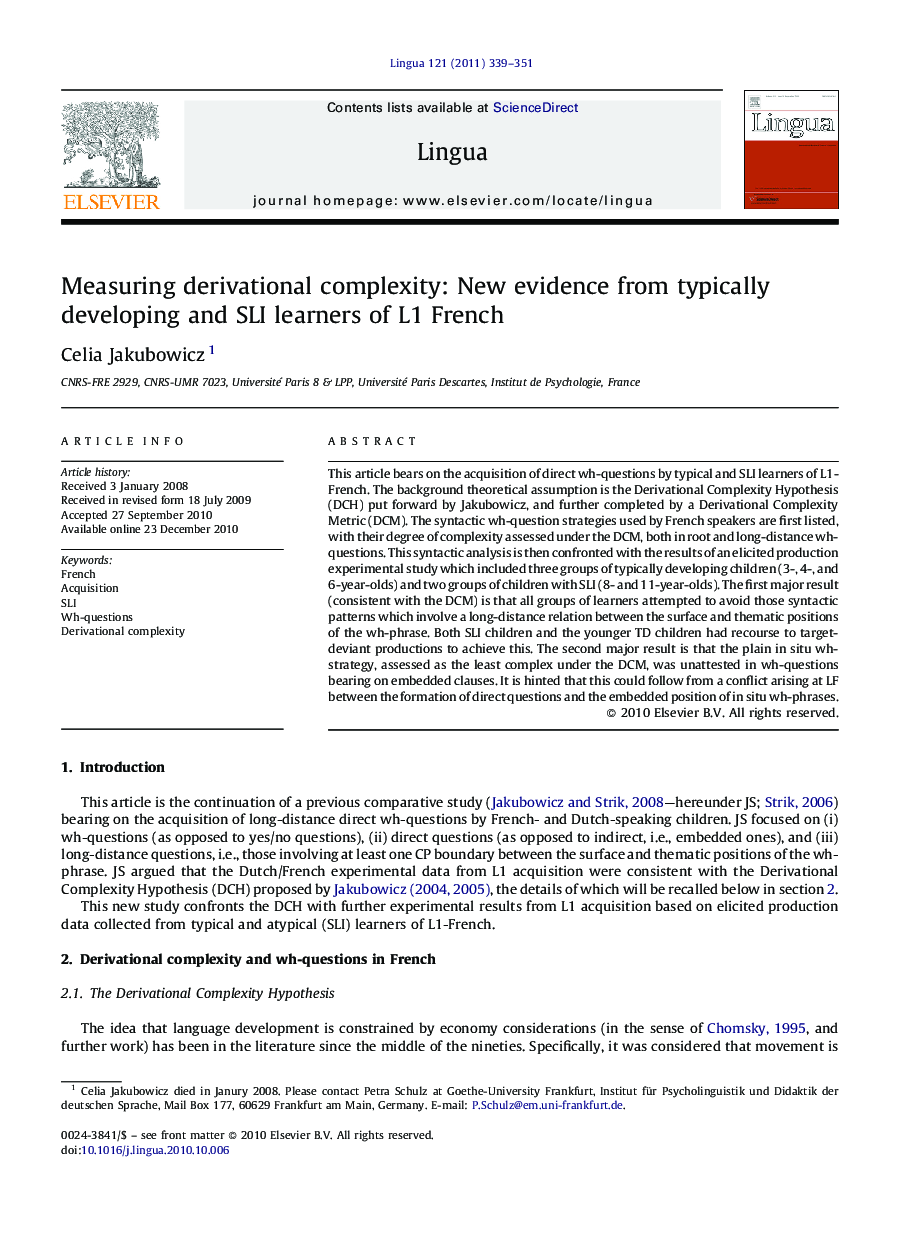| Article ID | Journal | Published Year | Pages | File Type |
|---|---|---|---|---|
| 10461206 | Lingua | 2011 | 13 Pages |
Abstract
This article bears on the acquisition of direct wh-questions by typical and SLI learners of L1-French. The background theoretical assumption is the Derivational Complexity Hypothesis (DCH) put forward by Jakubowicz, and further completed by a Derivational Complexity Metric (DCM). The syntactic wh-question strategies used by French speakers are first listed, with their degree of complexity assessed under the DCM, both in root and long-distance wh-questions. This syntactic analysis is then confronted with the results of an elicited production experimental study which included three groups of typically developing children (3-, 4-, and 6-year-olds) and two groups of children with SLI (8- and 11-year-olds). The first major result (consistent with the DCM) is that all groups of learners attempted to avoid those syntactic patterns which involve a long-distance relation between the surface and thematic positions of the wh-phrase. Both SLI children and the younger TD children had recourse to target-deviant productions to achieve this. The second major result is that the plain in situ wh-strategy, assessed as the least complex under the DCM, was unattested in wh-questions bearing on embedded clauses. It is hinted that this could follow from a conflict arising at LF between the formation of direct questions and the embedded position of in situ wh-phrases.
Keywords
Related Topics
Social Sciences and Humanities
Arts and Humanities
Language and Linguistics
Authors
Celia Jakubowicz,
